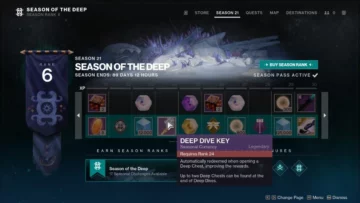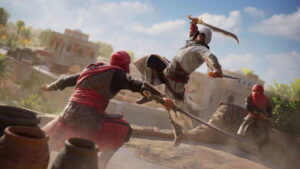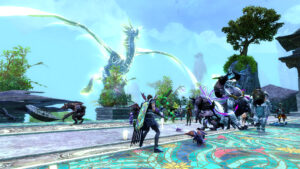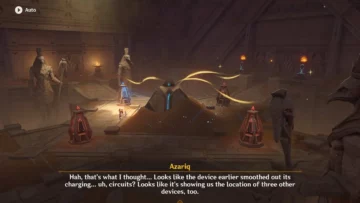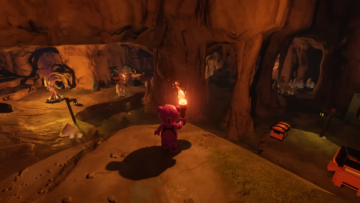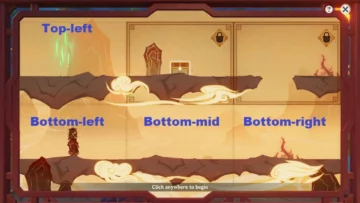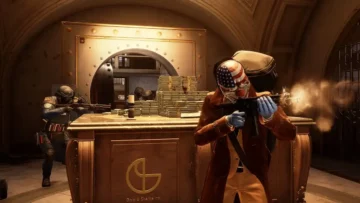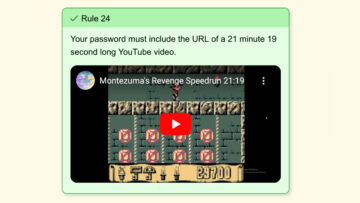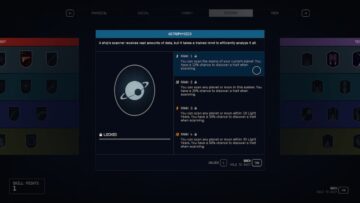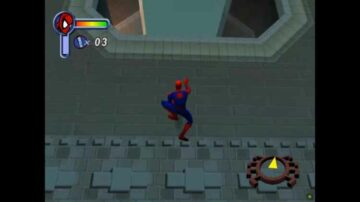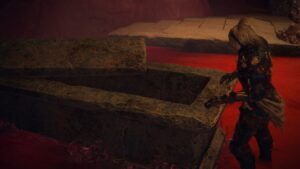For how beloved the Devil May Cry and Bayonetta games are, you’d expect more developers to make character action games inspired by them. The Souls series created a massive wave of copycats, but most devs don’t seem all that interested in trying to copy the character action subgenre. Mostly because it’s really hard to do it justice. Extremely tight, precise controls with a high skill ceiling and good pacing are instrumental to a game’s success. Soulstice is a character action game through and through that does a surprisingly admirable job in a lot of ways, even if it has some bizarre missteps that keep it from nipping too closely at the heels of its progenitors.
The story in Soulstice is surprisingly the best thing about it. It starts off slow without much context, so it didn’t at all grip me at first. But as the details trickle in and we learn more about the characters and world, I became fairly invested in the narrative. Briar and Lute are sisters joined together into one body, collectively called a chimera. Briar is alive and Lute is deceased, her soul attached to Briar and acting as a Shade that fights alongside her. A strange tear appears above the city of Ilden, causing The Order of Ashen Knights to send multiple chimeras to stop this tear from unleashing wraiths upon the world.
Wraiths are beings from beyond The Veil. Any living being they touch becomes a Corrupted, which is basically a zombie of sorts. There’s a ton of dialogue in Soulstice, all of it fully voiced. There are also a great many cutscenes. The story here is leagues better than anything in Devil May Cry of Bayonetta, which definitely helps hold the experience together. The voice acting is mostly pretty good too, with a cast led by Stefanie Joosten of Metal Gear Solid V fame as Briar. She does a good job, but her accent is noticeably less English than that of her sister’s actor. She still does a bit of an English accent, but other actors don’t bother. The enigmatic Observer Layton’s voice actor speaks with a cadence reminiscent of Doctor Evil, while Ashen Knight Donovan is a bit too monotone.
Shine on, you crazy diamond
Soulstice‘s structure is exactly like its inspirations. The game is divided into 25 chapters spread across five acts. Each chapter has its own screen that allows you to purchase items and skills, along with a plot description. The game includes five difficulties, three of which are available at the outset. Despite this being a character action game, the normal difficulty is extremely manageable, as healing items are frequently doled out and also quite affordable from the shop. Health orbs also frequently appear, either from downed enemies or destroyed objects.
Briar can have two weapons equipped at once. At first, she has her default sword (that behaves much like Dante’s) and a heavier melee strike. As the game goes on, Layton provides her with additional weapons, including a glaive, bow, and knives. One of Soulstice‘s most questionable design decisions is that you can only equip one of these at a time. Briar must always have her sword equipped, which massively limits her stylish attack potential. It’s a very surprising misstep that could have been easily rectified. There’s no good reason for it, either. We should be able to have any two weapons equipped that we please. It doesn’t help that the sword is the only weapon in the game that barely has any upgrades.
Briar controls very well. The weapons are flashy and fun to use and her dodge is responsive and offers i-frames. But if you dodge three times in a row, she can’t move for a second, which was a bad call. This led to me only dodging twice in a row if I could help it. Character action games don’t need all these limits. Weapon upgrades are the same for each weapon. You can unlock an additional combo, a stinger-type attack, a launcher, a slam, and upgrades to how much the weapons damage certain enemy types. But not all the weapons are as useful as others and some are very situational. Briar’s arsenal just doesn’t feel as well-rounded or fun as Dante’s or Bayonetta’s. The stinger-type attack also doesn’t register as much as it should and I never felt like I could rely on it, as the game changes up the classic input unnecessarily.
Shady part of me
The biggest difference that Soulstice offers come courtesy of Briar’s sister, Lute. Lute summons blue and red fields that allow Briar to hit similarly colored crystals and enemies. Lute also acts on her own, firing blasts at enemies, and she can parry or deflect certain attacks. She’ll also briefly freeze enemies in their tracks. All of these (sans the blasts) are controlled via a button that governs her parries. She also has a vast set of skill trees that grant additional abilities. All of her powers increase the entropy gauge. If it fills up, Lute overcharges and vanishes for a few seconds. But as you purchase more abilities, the entropy costs of her moves rise, meaning that, if you aren’t finding many entropy upgrades, you can find Lute overcharging so much that it becomes a problem.
You can increase both health and entropy by purchasing upgrades in the shop or finding three of each upgrade type in the levels, either hidden or as part of challenges. These can be pretty hard to find if you’re not thorough. Briar and Lute have a combined gauge showing their unity, which increases as you hit enemies without taking damage. When it’s high enough, Briar can use a special attack if it’s unlocked. When it’s full, Briar enters a super state that increases her speed and damage. This can’t be saved up like a Devil Trigger and getting hit will mean you need to build up more unity. I never figured out how to do the regular specials. I think you just need to hit an enemy with a weapon’s second combo when unity is high enough, but these attacks leave you wide open, so I always got hit before they landed and I always preferred to wait for the super mode at full unity anyway.
The bestiary in Soulstice is one of the best things about it. Enemies are varied and distinctive. In the first part of the game, both the levels and enemies are so dark that it can be hard to see them, which is a major annoyance early on. But as blue and red enemies appear and the scenery changes, this becomes much more manageable. Some enemies are a pain to fight, as they require you to kill multiple wraiths that emerge from their bodies. If you don’t kill the wraiths fast enough, they return to the initial enemy, bringing it back to life and healing it. This can turn late-game encounters into giant slogs.
Not this level geometry again
The level design is kind of lacking here. It gets the job done, but levels feel samey, often reusing too much geometry. If I see another castle bridge, I might start screaming. You’ll often be seeking out crystals to hit to open up pathways, which gets a bit old by the end of the game. There’s platforming to break up the combat and crystal-hitting, but the camera likes to take fixed angles that are far away, which can make these an annoyance. I almost always fell all the way to the bottom of sections while attempting these, mostly because I couldn’t see what I was doing. This also happens during certain fights, where the camera is so far away that I couldn’t get a good look at Briar.
The camera problems extend to combat. You’ll want to make use of the lock-on to keep track of enemies, but it’s subpar. It doesn’t reliably keep track of your foes and it can often obscure the action or move around wildly. There were a lot of times I got hit because I just couldn’t see what was going on. All of this can cause Soulstice to really drag, especially since this is a decent length game. It took me about 15 hours to beat and I don’t think it really needed to be that long. The fights in the last non-boss level were obnoxiously tiresome. Speaking of bosses, most of the boss battles are okay. One is straight-up awful, as the bosses themselves are quite easy, but they keep summoning enemies while removing your ability to dodge or jump, which made an easy boss fight arbitrarily difficult for no reason.
The final boss could have been something special, but instead, it’s a generic “the boss is giant and the platform you’re on comes up to their waist, so hit their hands when they slam them down.” It’s such a textbook boss fight that I couldn’t help but be disappointed. Despite the game’s issues with weapon selection, level design, and its camera, I did honestly find it to be greater than the sum of its parts. A good amount of that comes down to the story, which I thought really sealed the deal. It also doesn’t hurt that the art direction is quite excellent and the visuals themselves are attractive as well. The ending sets the game up for sequels, so let’s hope the systems are improved for the next go-around if we get one.





